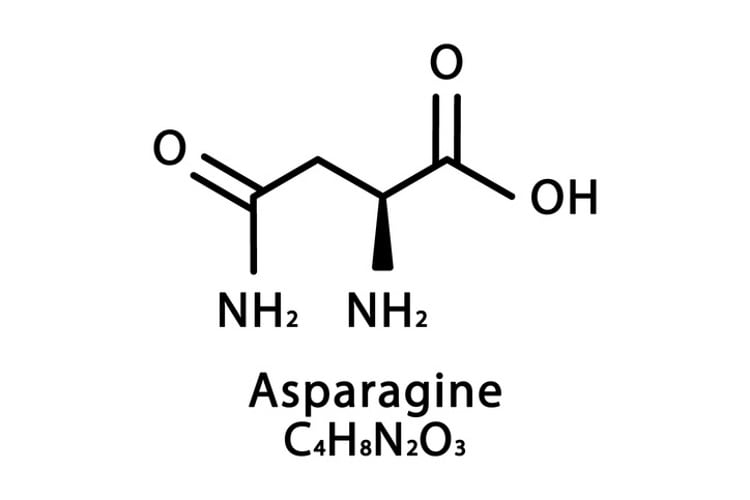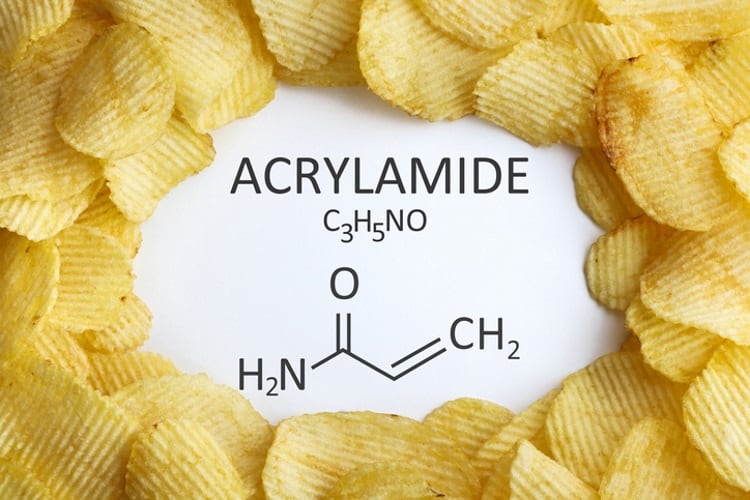Following BakeryandSnacks’ recently published article on acrylamide, the Israeli expert with more than 80 years of experience for both the food and non-food sectors reached out to provide our readers with a more technical look into the issue.
Acrylamide (AA) is known for its hazardous potential effect on human health, typically formed by the Maillard reactions during food processing practices at elevated temperatures. Such conditions may include practices such as baking, boiling or frying when reducing sugars or oligosaccharides ie, molecules having a free carbonyl group may participate by chemically reacting with the amine moiety of amino acids present in polypeptides and proteins.
But let’s step back a moment and explain sc-FOS.
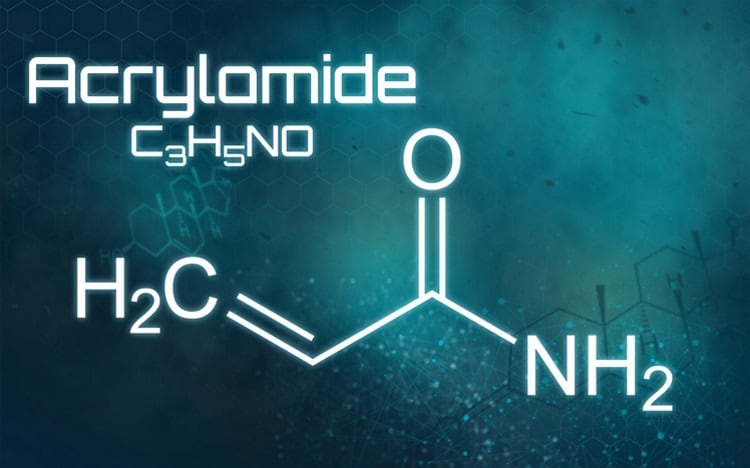
Short-chain fructo-oligosaccharides (sc-FOS) are among the group of most researched non-digestible soluble prebiotic dietary fibre consumed by humans. A myriad of beneficial attributes has been documented for prebiotics-beneficial activities and certainly for sc-FOS – including strong bifidogenic effect (gut health), ability to lower counts of potential pathogens (an organism causing disease to its host), acidification of colon by inducing short-chain fatty acid (SCFA) bacterial production (healthy growth of good bacteria), increased absorption of calcium (Ca+2) and magnesium(Mg+2), anti-tumour activity, synthesis of B and K vitamins and immunomodulation (change in the body’s immune system, caused by agents that activate or suppress its function).
sc-FOS is manufactured via an enzymatic reaction (fructosyltransferase activity) starting from the disaccharide sucrose (glucose + fructose; GF) as raw material. sc-FOS uses in human nutrition include sugar reduction, fibre enrichment and prebiotic action. In addition, sc-FOS can also be used in food additives and nutraceutical markets as well as in pet and animal feed industries.
Reducing vs non-reducing oligosaccharides and their participation in non-enzymatic Maillard browning reactions
Sugar-based sc-FOS is composed of oligofructose molecules of the GFn-type, that is, oligofructose molecules composed of 2, 3 or 4 fructosyl monomeric units bonded to each other having a glucosyl terminal unit at the non-reducing end.
Therefore, Nystose (GF2), Kestose (GF3) and Fructosyl-Nystose (GF4) are non-reducing oligosaccharides unable to directly participate in Maillard chemical browning reactions.
In contrast to sugar-based sc-FOS (buildup of only GFn-type oligosaccharides), inulin and oligofructose (inulin’s enzymatic hydrolysis product) consist – in addition to GFn-type structures – also FFn-type fructose oligomers having no terminus of a glucosyl moiety, therefore having a higher reducing power with ability to directly participate in Maillard browning reactions in foods.
The table below shows a comparison of several types of commercial non-digestible oligosaccharides (NDO’s) and polysaccharides, and their related ability to participate in Maillard browning based on their classification as reducing /non-reducing sugars.
Oligosaccharides/polysaccharides versus Maillard browning ability
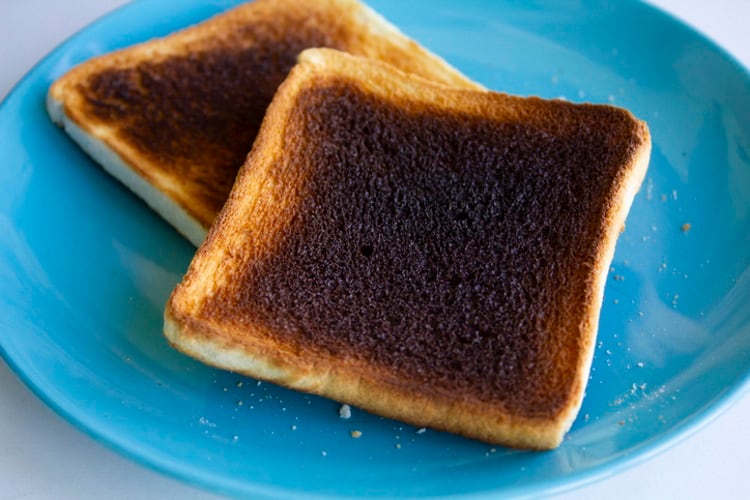
“Aiming to demonstrate the above effect, we have shown in Galam’s food application laboratory that the browning intensity of cookies formulated with sc-FOS is lower when compared to the same cookies with the only difference being the later formulated using inulin or inulin-derived oligofructose,” said Dr Fernando Schved, VP R&D, Support and CSO, Galam.
“Cookies made with sc-FOS brown just like their sucrose counterpart’s reference, while those produced with inulin or inulin-derived-oligofructose have a higher tendency to brown, and can be easily distinguished from the sucrose control.
“From a marketing and sales point of view, if a food producer is seeking to reduce sugar content and wish to minimise any visual differences between the regular sugar containing version to the reduced one, then using sc-FOS fiber (like Galam’s GOSFOSTM) will result in minimal distinguishable visual differences.”
Nutritional aspects

Acrylamide (AA) is an unsaturated amide that has been produced for decades by hydration of acrylonitrile. It is odourless, highly water soluble (having a low MW of 71.08) and melting point of 84.5◦C.
AA monomer is readily polymerizable to polyacrylamide and provides a myriad of applications in chemical manufacturing industries (ie, flocculant, sealant for construction, binder in the paper/pulp industry, dye synthesis).
Concerns about human exposure to AA arose in 2002 when it was found that AA may be created in foods during high-temperature cooking, such as frying, baking and roasting at temperatures usually above 120°C and low moisture.
AA may be formed in products such as backed or fried carb-rich bread, biscuits and coffee.
It has been demonstrated the reaction of the free amino acid asparagine with reducing sugars (naturally occurring or added in foods) via Maillard reaction is the main pathway contributing to AA accumulation in foods.
AA is considered a ‘probable carcinogenic’ and international organisations – including FDA, EFSA and WHO – have proposed to take action to reduce its levels in the food industry supply chain. For example, in March 2016, the US Department of Health and Human Services, Food and Drug Administration Centre (FDA) for Food Safety and Applied Nutrition issued guidance that suggest a range of possible approaches to reducing acrylamide levels.
In view of the above, the milder browning/Maillard potential related to non-reducing oligosaccharides such as sc-FOS may be beneficial from a nutritional aspect, that is, a reduced tendency to participate in Maillard/chemical browning reactions lowers the risk of production of chemical hazardous molecules such as acrylamide (AA).
Recently, results from mouse-model research have reported that ‘advanced glycation end products’ (AGE’s) originating from Maillard reaction – such as those occurring in the manufacture of processed foods – may negatively harm health by contributing to ‘leaky gut’.
It is therefore hypnotisable that sc-FOS (being non-reducing oligosaccharide) will not have any additional contribution to the formation of AA beyond to the inherent contribution of sucrose as reference in products which may be consumed daily by humans.
Galam’s AA-busting cookies
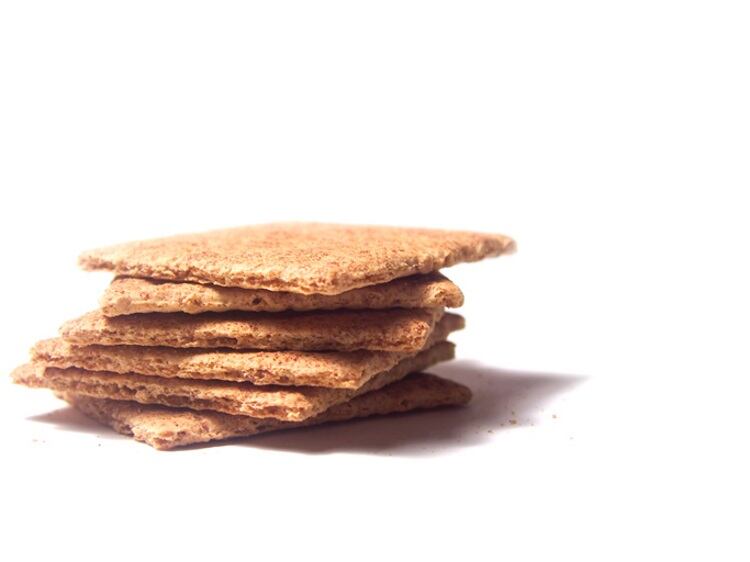
Aiming to explore the above, sugar-reduced cookies were prepared in Galam’s application laboratory, where the only difference between reference and test samples was the partial (35%) incorporation of sc-FOS (GOFOS) or inulin instead of sugar.
Cookies were oven-baked for 10 minutes at 170°C and evaluated for AA formation in an external certified analytical laboratory, and compared verus the full sugar version.
AA was determined by B-AAM-LMS (LLE/SPE/LC-MS/MS).
AA content for the reference cookies (100% sugar) was found to be 40.7 (± 4.2) μg/kg. Test cookies formulated with inulin resulted in an AA content of 91.3 (± 9.3) μg/kg (more than double vs. control), whereas those formulated with GOFOS sc-FOS had an AA content of 39.2 (± 4,0) μg/kg, that is, levels comparable to the reference.
Summary
“In conclusion, sc-FOS may provide added value in the form of a ‘sugar-like’ comparable and undistinguishable tendency to cause browning via Maillard reactions in cookies versus the full sugar versions,” said Dr Schved.
“Moreover, when compared to cookies formulated with inulin, sugar replacement with sc-FOS provided the advantage in the form of a reduced contribution to AA levels.”
Study:
Abdalla A. Elbashir, Mei M Ali Omar, Wan Aini Wan Ibrahim, Oliver J. Schmitz & Hassan Y. Aboul-Enein (2014) Acrylamide Analysis in Food by Liquid Chromatographic and Gas Chromatographic Methods, Critical Reviews in Analytical Chemistry, 44:2, 107-141, DOI: 10.1080/10408347.2013.829388
Safety evaluation of certain contaminants in food, WHO Food Additives Series: 63, FAO JECFA monographs 8, 72nd meeting of the Joint FAO WHO Expert Committee on Food A Leaky gut: mechanisms, measurement and clinical implications in humans
Leaky gut: mechanisms, measurement and clinical implications in humans Michael Camilleri 1dditives (JECFA), Rome, 2011; Gut. 2019 Aug;68(8):1516-1526. doi: 10.1136/gutjnl-2019-318427. Epub 2019 May 10.


